Amphipleura pellucida
Amphipleura pellucida is a delicate diatom that occurs in the plankton, or at the edge of freshwater lakes.
Amphipleura pellucida was first described in 1833 by Friedrich Kützing, from among some cyanobacteria (Oscillatorien) in standing water near Weisenfels in Germany. Although Kützing could see very little detail, he noticed that the diatoms could move.
The diatom cells are narrow for their length, with very regular small pores.
It is these small pores that made Amphipleura pellucida a favourite test object for microscope lenses - the pores are one of the smallest things that can be seen using a light microscope - they are at the limit of the light microscope’s resolution.
Species detail
Choloroplasts
Diatoms are photosynthetic organisms with chloroplasts that often appear yellow-brownish because, in addition to green chlorophyll, they contain brownish and yellowish pigments.
In Amphipleura pellucida, there is a single H-shaped chloroplast - its ‘arms’ extend along the cell’s length, with a cross connection at the centre.
-

Taxonomy
Diatoms cells can only be seen clearly using a microscope. Find out what they look like.
-

Distribution and habitat
Find out where Amphipleura pellucida is found.
-

Biology
Amphipleura cells can glide over surfaces, but are also found suspended in plankton. The cell walls are made of silica and have a highly regular structure. Discover how scientists use this regularly-shaped organism to test the quality of their microscopes.
Images
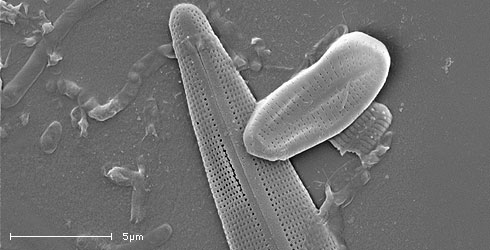
Amphipleura pellucida

Amphipleura pellucida
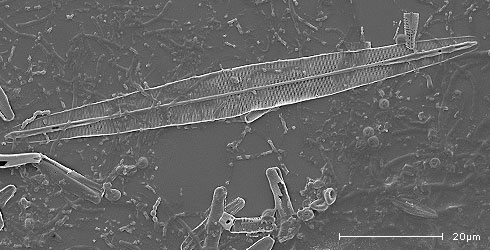
Amphipleura pellucida

Amphipleura pellucida
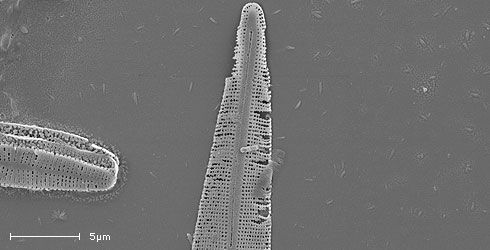
Amphipleura pellucida

Amphipleura pellucida
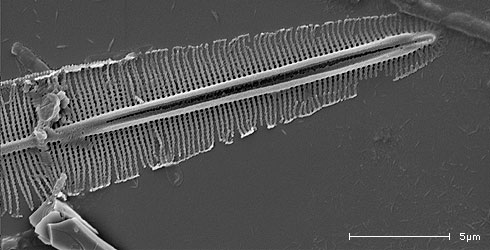
Amphipleura pellucida
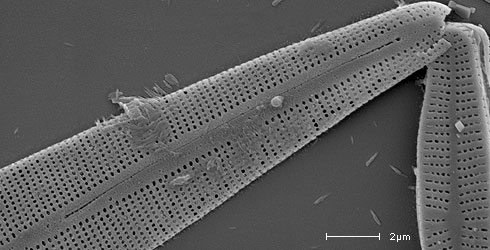
Amphipleura pellucida
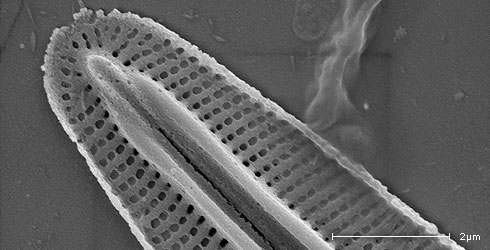
Amphipleura pellucida

Amphipleura pellucida
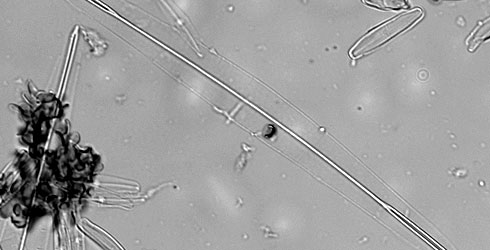
Amphipleura pellucida

Amphipleura pellucida

Amphipleura pellucida
About the author
A word from the author
'This diatom is well-known to amateur microscopists because its fine, regular pores were a traditional test of the quality of microscope lenses. Like other diatoms, it also demonstrates how organisms can build highly regular structures from inorganic compounds.'
Toolbox
Glossary
Raphe slits are longitudinal slits in the silica wall along the axis of the valve, allowing contact between the surface of the protoplast and the external environment. Diatoms require raphe slits to be able to move actively over surfaces.

